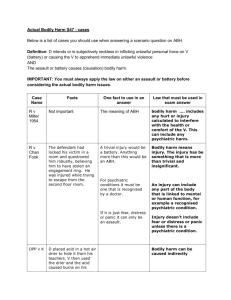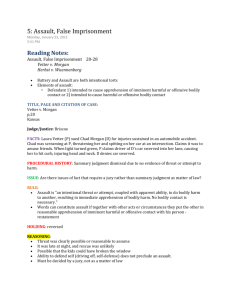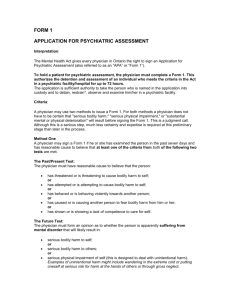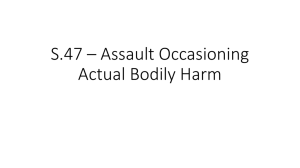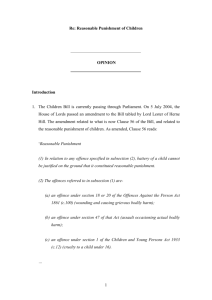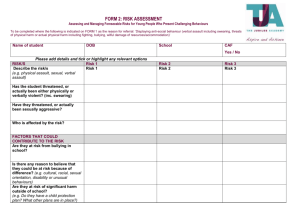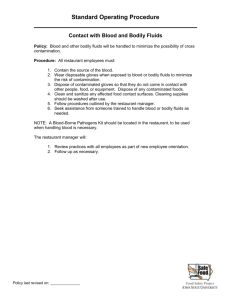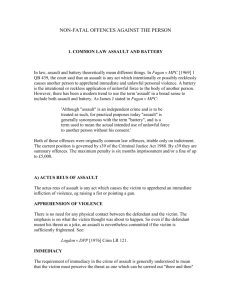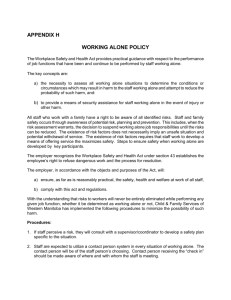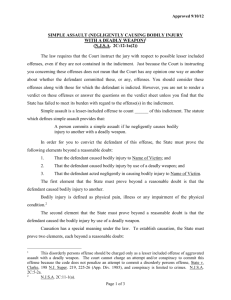ABH - Psychiatric Injury
advertisement
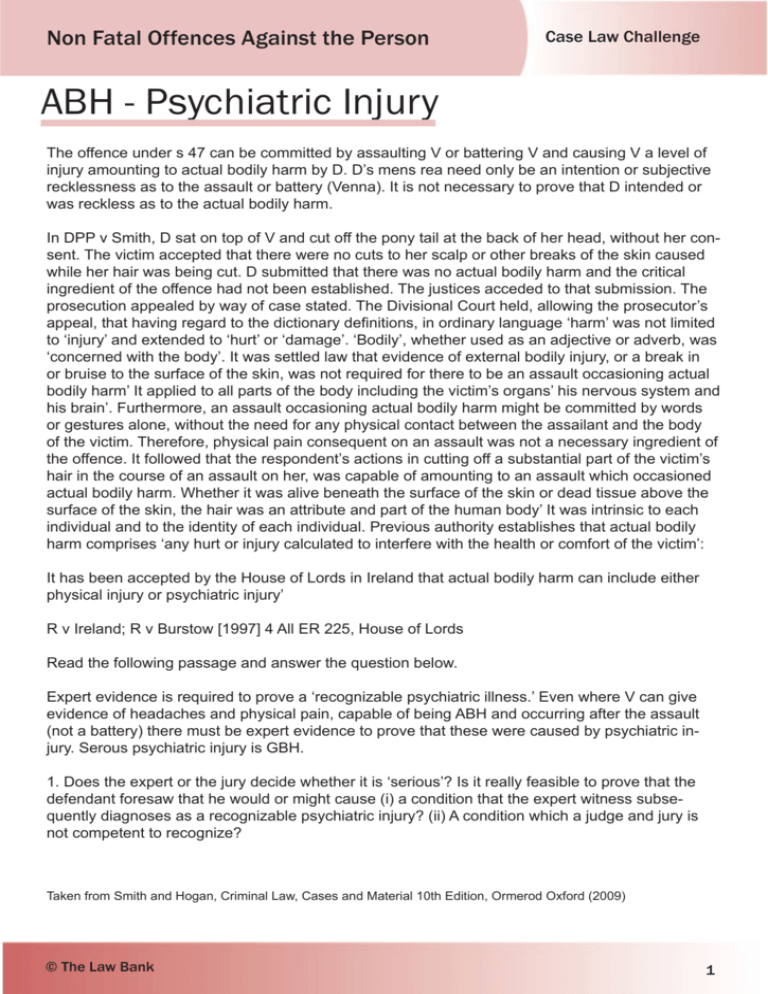
Non Fatal Offences Against the Person Case Law Challenge ABH - Psychiatric Injury The offence under s 47 can be committed by assaulting V or battering V and causing V a level of injury amounting to actual bodily harm by D. D’s mens rea need only be an intention or subjective recklessness as to the assault or battery (Venna). It is not necessary to prove that D intended or was reckless as to the actual bodily harm. In DPP v Smith, D sat on top of V and cut off the pony tail at the back of her head, without her consent. The victim accepted that there were no cuts to her scalp or other breaks of the skin caused while her hair was being cut. D submitted that there was no actual bodily harm and the critical ingredient of the offence had not been established. The justices acceded to that submission. The prosecution appealed by way of case stated. The Divisional Court held, allowing the prosecutor’s appeal, that having regard to the dictionary definitions, in ordinary language ‘harm’ was not limited to ‘injury’ and extended to ‘hurt’ or ‘damage’. ‘Bodily’, whether used as an adjective or adverb, was ‘concerned with the body’. It was settled law that evidence of external bodily injury, or a break in or bruise to the surface of the skin, was not required for there to be an assault occasioning actual bodily harm’ It applied to all parts of the body including the victim’s organs’ his nervous system and his brain’. Furthermore, an assault occasioning actual bodily harm might be committed by words or gestures alone, without the need for any physical contact between the assailant and the body of the victim. Therefore, physical pain consequent on an assault was not a necessary ingredient of the offence. It followed that the respondent’s actions in cutting off a substantial part of the victim’s hair in the course of an assault on her, was capable of amounting to an assault which occasioned actual bodily harm. Whether it was alive beneath the surface of the skin or dead tissue above the surface of the skin, the hair was an attribute and part of the human body’ It was intrinsic to each individual and to the identity of each individual. Previous authority establishes that actual bodily harm comprises ‘any hurt or injury calculated to interfere with the health or comfort of the victim’: It has been accepted by the House of Lords in Ireland that actual bodily harm can include either physical injury or psychiatric injury’ R v Ireland; R v Burstow [1997] 4 All ER 225, House of Lords Read the following passage and answer the question below. Expert evidence is required to prove a ‘recognizable psychiatric illness.’ Even where V can give evidence of headaches and physical pain, capable of being ABH and occurring after the assault (not a battery) there must be expert evidence to prove that these were caused by psychiatric injury. Serous psychiatric injury is GBH. 1. Does the expert or the jury decide whether it is ‘serious’? Is it really feasible to prove that the defendant foresaw that he would or might cause (i) a condition that the expert witness subsequently diagnoses as a recognizable psychiatric injury? (ii) A condition which a judge and jury is not competent to recognize? Taken from Smith and Hogan, Criminal Law, Cases and Material 10th Edition, Ormerod Oxford (2009) © The Law Bank 1
